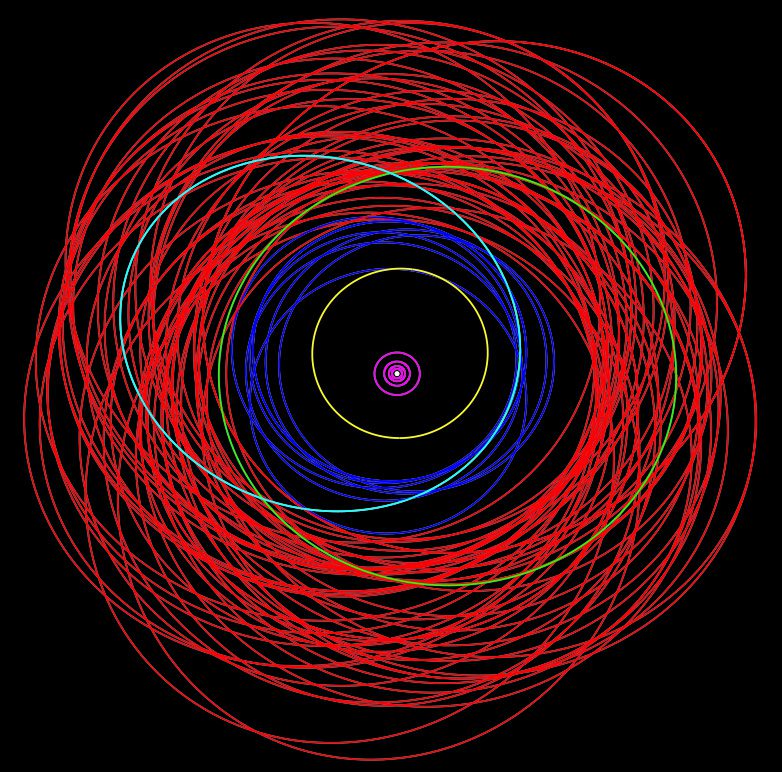The largest planet in the Solar System is now officially the local big dog when it comes to collecting moons, with a dozen new satellites confirmed to be in orbit around Jupiter. The addition of these 12 previously unknown moons brings the gas giant’s total count to 92, overtaking Saturn’s impressive stash of 83 orbiting bodies.
In reality, both planets are likely to be accompanied by even more moons, yet spotting these miniature celestial bodies poses a considerable challenge to astronomers. Those that are small enough to have evaded detection up to now can probably only be seen using extremely powerful telescopes that don’t have a wide enough field of view to take in the entire Jovian system, while the extreme glare given off by Jupiter only complicates matters.
Unphased by these difficulties, Dr Scott Sheppard has spent the past couple of years tracking the orbits of the 12 new moons, which have now been published by the Minor Planet Center (MPC). A previous batch of Jovian moons – also discovered by Sheppard – was published back in 2018.
Of the dozen new satellites, nine are located among the distant clusters of moons that orbit Jupiter in retrograde, meaning they circle the planet in the opposite direction to the inner moons. Small in size, these back-tracking objects all take at least 550 days to complete one orbit.
The remaining three moons were discovered within the groups of prograde satellites that lie between the large, close-in Galilean moons and the far-out retrograde objects. Two are located in the Himalia group, which orbits Jupiter at a distance of between 11 and 12 million kilometers (6.8 to 7.5 million miles), with the other belonging to the Carpo group, located some 17 million kilometers (10.6 million miles) from the planet.

The orbits of Jupiter’s moons. The larger, prograde Galilean moons are depicted in purple, with the Himalia group in blue and Carpo in cyan. The green orbit represents Valetudo, while the outer retrograde moons appear in red. Image credit: Scott Sheppard
All 12 of Jupiter’s new accessories take more than 340 days to complete an orbit and are too small to warrant an official name. These mini moons are thought to be the leftovers of much larger satellites that shattered millions of years ago after colliding with another object.
Though astronomers can’t say exactly what it was that smashed into these ancient moons, Sheppard’s 2018 discoveries contained a clue in the shape of an unusual moon called Valetudo. Bucking the Jovian trend, Valetudo travels prograde despite the fact that its orbit crosses those of the distant retrograde moons.
It doesn’t take a genius to work out that swimming upstream increases your chances of bumping into someone, and some astronomers therefore speculate that Valetudo may be the remnants of a larger object that once tore through Jupiter’s retrograde moon clusters like a wrecking ball.
[H/T: Sky & Telescope]
Source Link: Jupiter Officially Has 12 New Moons